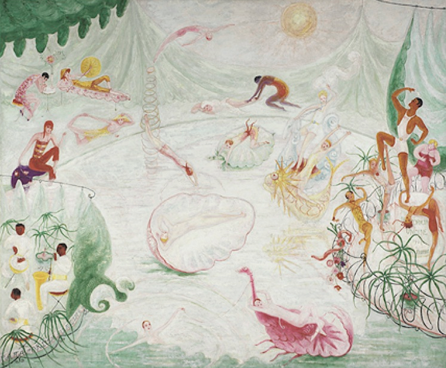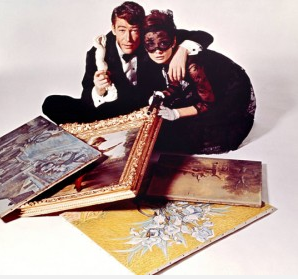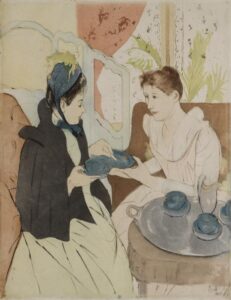In this weekly feature, we will share our ideas for what you can do “off-campus” while the museum is closed. This week’s entry comes from Sadie Burzan, Vassar College class of 2011 and Art Center student docent.

Traveling only thirty-one minutes north of the Vassar campus, you will find yourself on the other side of the Hudson River in a city named Kingston, the former capital of New York state . At 84 Ten Broeck Avenue, in a brick building that once served as a Model T showroom, you will now find R&F Handmade Paints, an encaustic paint manufacturer and home of an encaustic painting gallery. Starting tomorrow, October 2nd, the R&F gallery is exhibiting the little-known encaustic paintings of Nancy Graves, Vassar College class of 1961.
Anyone who has spent some time in the entrance pavillion of the Frances Lehman Loeb Art center may recognize Graves by her sculpture, Five Fans, Lampshades, and Lotus. Graves – a sculptor, filmmaker, painter, and printmaker – constantly experimented with a variety of medium. Among her favored materials were watercolor and oil paints, steel, baked enamel, and encaustic paints.
So what exactly is encaustic paint? It is the combination of beeswax, damar resin, and pigments. To use encaustic paints, you must first heat the wax and then apply it to an absorbent surface, where it hardens and cools almost immediately. Artists in Greece were using encaustic paints as early as the fifth century BC. They used wax to color marble and terra cotta, as well as to paint portraits and mythological scenes.

The Lehman Loeb collection has embraced wax with Florine Stettheimer’s huge (five foot wide!) encaustic painting, Natatorium Undine, painted in 1927. Some of Nancy Graves’ encaustic paintings are even more massive – one painting, titled Equivalent (1978), is one hundred inches wide. Only in the twentieth century, with the advent of portable heating tools, did encaustic painting once again become an approachable art material. Other artists found in the Art Center collection, such as Diego Rivera, Lynda Benglis, and Alfonso Ossorio, have also worked with encaustic paints.
With the leaves in full autumn color, this is the perfect time of year to take the short and scenic trip to Kingston, NY (only minutes away from the beautiful Catskill Mountains) and the lovely R&F gallery. The Nancy Grave exhibit at R&F opens tomorrow, October 2nd, and will run until November 20th. Linda Konheim Kramer, Executive Director of the Nancy Graves Foundation, will speak at the opening on October 9th, from 5-7 PM.




